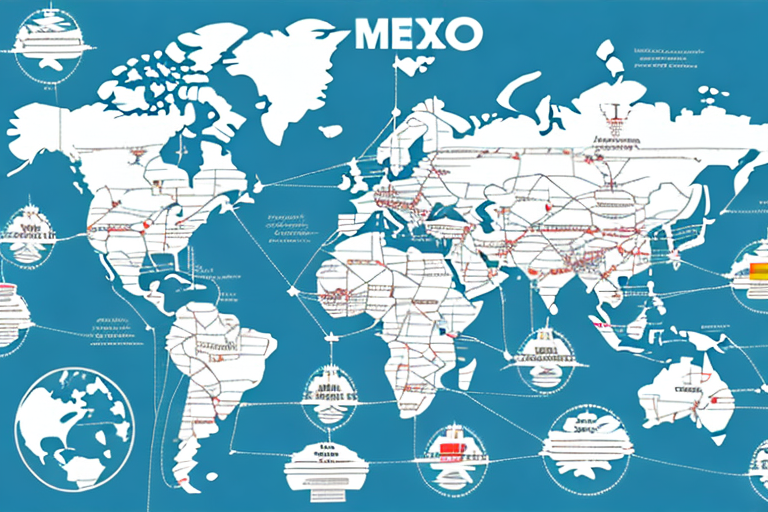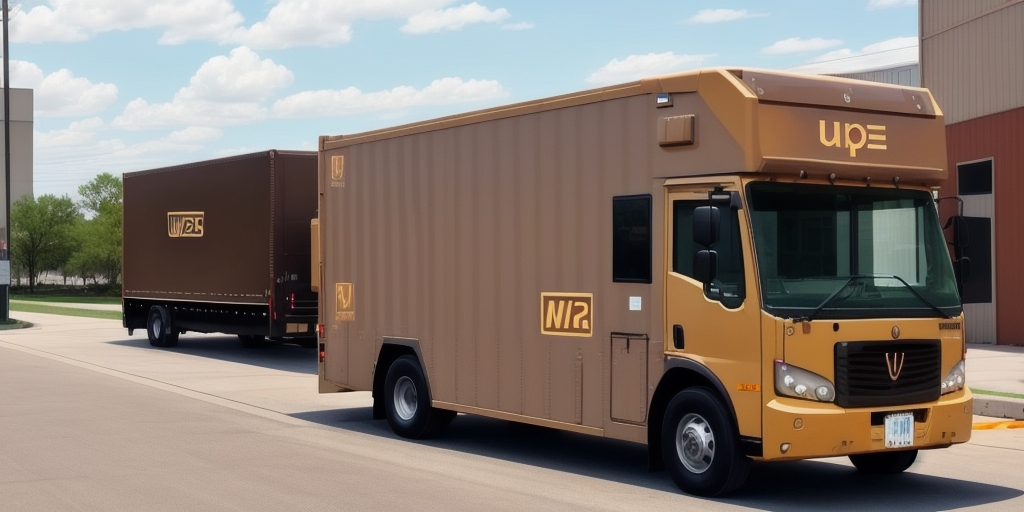Understanding International Shipping Regulations
As businesses increasingly operate on a global scale, international shipping has become more intricate. Navigating the diverse rules and regulations of different countries, coupled with managing cross-border logistics, can be challenging. This section delves into the various facets of international shipping regulations and offers strategies to effectively navigate this complex landscape.
Key Regulatory Components
When shipping goods across borders, numerous regulations must be adhered to, including customs duties, taxes, and quotas. It is essential to comprehend the regulatory landscape of each country involved in your shipping route. Failing to comply can lead to hefty penalties and fines.
- Customs Duties: Taxes imposed on imports and exports.
- Taxes: Value-added tax (VAT) and other applicable taxes.
- Quotas: Limits on the quantity of specific goods that can be imported or exported.
Essential Shipping Documentation
Proper documentation is critical for compliance. Essential documents include:
- Commercial Invoices: Details of the transaction between the seller and buyer.
- Packing Lists: Information about the contents of each package.
- Certificates of Origin: Verification of the goods' origin country.
Impact of Transportation Methods on Regulations
The transportation method impacts regulatory requirements:
- Air Shipping: Stricter regulations on certain goods, such as electronics and perishables.
- Sea Shipping: May require additional documentation for hazardous materials.
- Land Transport: Subject to local transportation regulations and infrastructure constraints.
For comprehensive guidance, refer to the U.S. Customs and Border Protection or the relevant authority in your destination country.
Choosing and Optimizing Shipping Methods
Air, Sea, and Land Transportation Options
Selecting the appropriate shipping method is crucial for balancing cost, speed, and reliability. The primary options include:
- Air Transportation: Fastest option, ideal for urgent and high-value shipments, but typically more expensive.
- Sea Transportation: More cost-effective for large and bulky shipments, though slower compared to air freight.
- Land Transportation: Suitable for regional shipping, offering flexibility but subject to road and infrastructure conditions.
Factors Influencing Shipping Method Selection
Consider the nature of your goods when choosing a shipping method. For instance, fragile or perishable items may require expedited shipping and special handling. Additionally, take into account the destination's customs regulations and potential fees or taxes that could affect your choice.
For more detailed information, visit the U.S. International Trade Administration.
Customs Clearance and Compliance
Streamlining Customs Clearance
Clearing customs is one of the most critical steps in international shipping. It involves ensuring that all required paperwork is completed correctly and submitted on time. Non-compliance with customs regulations can delay your shipment and result in additional costs.
- Work with experienced customs brokers who understand the intricacies of cross-border regulations.
- Ensure all documentation is accurate and complete.
- Stay informed about any regulatory changes in your target market.
Customs officials may inspect shipments to verify compliance with safety and security standards. Partnering with a reputable customs broker can help mitigate risks and expedite the clearance process.
Learn more about customs clearance from the U.S. International Trade Administration.
Staying Updated on Regulatory Changes
International shipping regulations are subject to change due to political, economic, and environmental factors. Regularly consult official government websites and subscribe to industry newsletters to stay informed about the latest updates.
Managing Shipping Costs and Risks
Cost-Reduction Strategies
Shipping costs can significantly impact your business's bottom line. Implement the following strategies to manage and reduce these expenses:
- Consolidate Shipments: Combine smaller shipments into larger ones to benefit from economies of scale.
- Negotiate Rates: Work with shipping companies to secure competitive rates based on volume and loyalty.
- Optimize Packaging: Use appropriately sized packaging to minimize weight and volume, reducing shipping costs.
- Choose Cost-Effective Shipping Methods: Consider alternatives like rail or sea freight for significant savings over air freight.
- Regularly Review Shipping Data: Analyze your shipping patterns to identify areas for improvement and cost reduction.
Additionally, using eco-friendly packaging not only cuts costs but also enhances your brand's sustainability image, appealing to environmentally conscious consumers.
For more tips on cost management, refer to resources from the World Bank's Logistics Performance Management.
Risk Management and Liability
International shipping involves various risks, including damage to goods, theft, and lost shipments. To effectively manage these risks:
- Obtain Adequate Insurance: Protect your shipments with comprehensive insurance coverage.
- Partner with Trusted Logistics Providers: Choose reputable companies with proven track records in handling international shipments.
- Define Clear Liability Policies: Establish agreements that outline responsibilities and procedures in case of disruptions or issues.
Implementing these measures can help mitigate potential losses and ensure a more secure shipping process.
Learn more about risk management in international shipping from the International Risk Management Institute.
Communication and Cultural Considerations
Navigating Cultural Differences
Cultural differences can significantly impact your international shipping logistics. Understanding and respecting these differences ensures smoother operations and fosters positive business relationships. Key cultural considerations include:
- Business Practices: Different countries have varying expectations regarding negotiations, contracts, and business etiquette.
- Communication Styles: Some cultures prefer direct communication, while others favor a more indirect approach.
- Attitudes Towards Punctuality: Timeliness may be critical in some cultures, whereas others may have more flexible schedules.
For example, in certain cultures, gift-giving is a customary practice to show respect and goodwill, while in others, it might be inappropriate or even prohibited. Additionally, understanding the importance of hierarchy and status in different cultures can influence how you interact with partners and stakeholders.
Collaborating with local partners who are familiar with these cultural nuances can enhance your shipping operations' efficiency and effectiveness.
Explore more on cultural considerations in international shipping at the International Trade Administration's cultural guide.
Effective Communication with International Partners
Effective communication is crucial for successful international shipping. Challenges such as language barriers and time zone differences can impede smooth operations. To enhance communication:
- Establish Clear Communication Protocols: Define preferred languages and utilize professional translation services when necessary.
- Maintain Regular Updates: Keep all parties informed about shipment statuses and any potential issues.
- Leverage Technology: Use tools like video conferencing, instant messaging, and project management software to facilitate real-time communication.
Cultural awareness also plays a significant role. Tailor your communication style to align with your partners' cultural expectations to avoid misunderstandings and build stronger relationships.
For more communication strategies, refer to the Forbes Guide on Effective International Communication.
Leveraging Technology in International Shipping
Advanced Tracking Technologies
Tracking shipments is essential to ensure timely delivery and maintain visibility throughout the shipping process. Modern tracking technologies offer real-time updates on your shipments' status and location. Key tracking features include:
- Real-Time Tracking: Monitor your shipment's progress via GPS and IoT devices.
- Automated Notifications: Receive alerts on shipment milestones, delays, or issues.
- Mobile Access: Use mobile apps provided by shipping companies for on-the-go tracking.
By staying informed about your shipment's status, you can proactively address any potential problems and ensure that your goods arrive on time and in good condition.
Explore advanced tracking solutions offered by the TrackPG.
Automation and Robotics in Logistics
Technology is revolutionizing international shipping, enhancing efficiency, reducing costs, and increasing transparency. Key technological advancements include:
- Logistics Software: Streamlines operations, manages inventory, and optimizes routing.
- Advanced Tracking Technologies: Provides real-time visibility and monitoring of shipments.
- Automation and Robotics: Improves handling efficiency in warehouses and ports.
- Drone and Autonomous Vehicles: Potential to reduce delivery times and lower carbon footprints.
- Blockchain Technology: Enhances security, transparency, and traceability in international trade.
Embracing these technologies can provide a competitive edge by improving operational efficiency and customer satisfaction.
For insights into technological innovations in shipping, visit the McKinsey & Company’s report on the Future of Global Shipping.
Sustainable Practices in International Shipping
Eco-Friendly Packaging
As environmental concerns rise, ensuring that your shipping practices comply with sustainability standards is increasingly important. Key considerations include:
- Adopt Eco-Friendly Packaging: Use recyclable or biodegradable materials to reduce environmental impact.
- Reduce Carbon Footprint: Choose energy-efficient transportation methods and optimize shipping routes to minimize emissions.
- Comply with Environmental Regulations: Adhere to international standards such as the International Maritime Organization’s emission control regulations.
- Partner with Sustainable Logistics Providers: Collaborate with companies that prioritize sustainability in their operations.
By implementing sustainable practices, your business can not only comply with regulations but also enhance its reputation among environmentally conscious consumers.
Discover more on sustainable shipping practices from the International Maritime Organization's environmental guidelines.
Compliance with Environmental Standards
Ensuring compliance with environmental and sustainability standards involves continuous monitoring and adaptation to new regulations. Implementing practices such as carbon offsetting and investing in green technologies can further enhance your sustainability efforts.
Preparing for Globalization Challenges
Developing a Comprehensive Shipping Strategy
Globalization presents both opportunities and challenges for businesses engaged in international shipping. To successfully navigate this landscape:
- Develop a Comprehensive Shipping Strategy: Incorporate regulatory compliance, logistics planning, and risk management.
- Build Strong Relationships with Logistics Providers: Collaborate with reliable partners to ensure efficient and cost-effective shipping operations.
- Invest in Technology: Utilize advanced software and tracking systems to enhance operational efficiency.
- Stay Informed on Global Trends: Keep abreast of changes in international trade policies, market dynamics, and technological advancements.
- Enhance Cultural Competence: Understand and respect cultural differences to build positive international relationships.
By implementing these strategies, businesses can effectively manage the complexities of international shipping and capitalize on the benefits of operating in a global market.
For a detailed guide on preparing for globalization, refer to the Export.gov's Globalization Trends.








